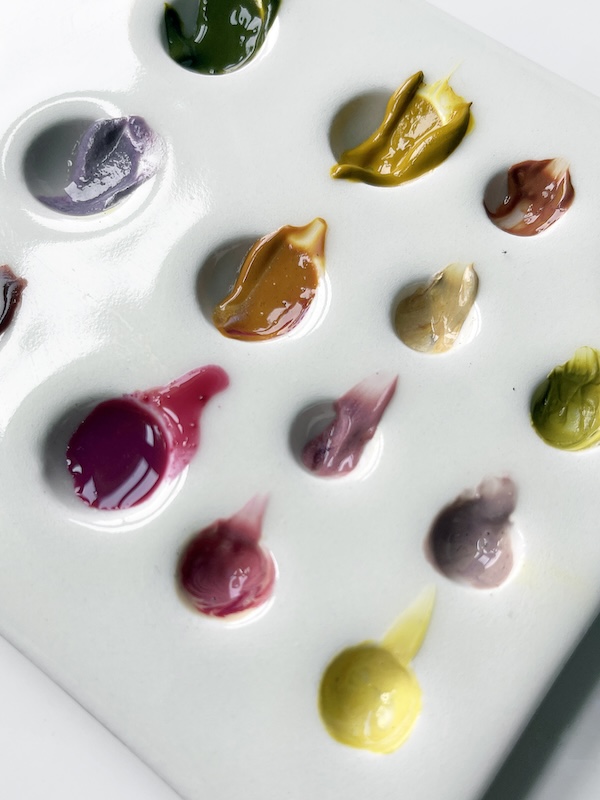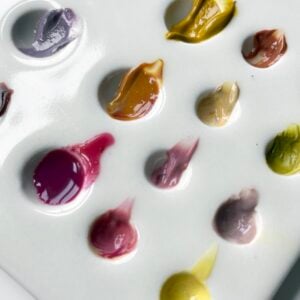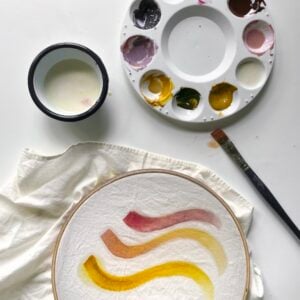For Sunday Visit, Botanical Colors sits down for an interview with a luminary in the natural dye, textile and art world. This week we visit with our resident Lake Pigment expert Natalie Stopka to talk about her upcoming workshop with us! Grab a cup of tea and settle in to learn about someone you never knew! Catch up on all our Sunday Visits HERE.
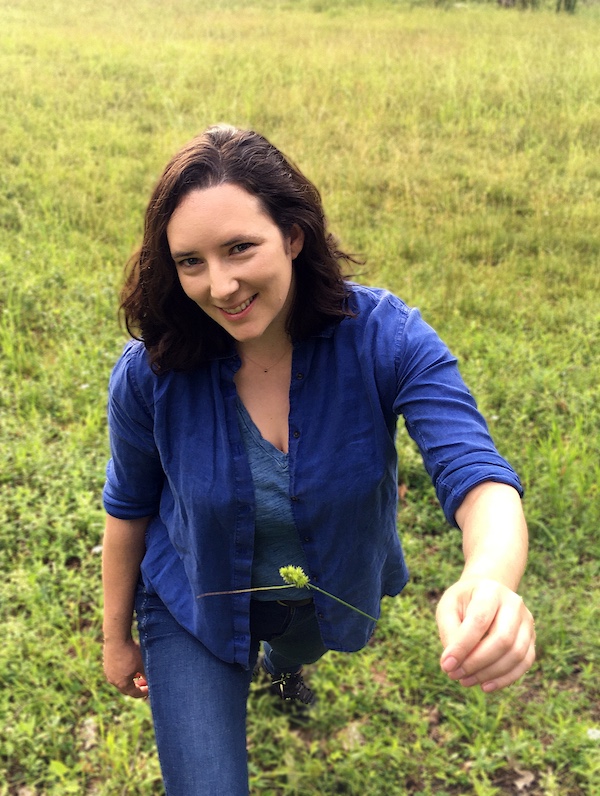
What first sparked your interest into natural plant color?
About 15 years ago I had the realization that instead of purchasing all the materials for a piece of art (an artist book in this case), I could MAKE all the materials. The plant-based paper, thread, fabric, dye, ink and even adhesive could subtly and eloquently speak of place, collaboration with plants, and plants’ role in the history of artisanry. That idea started my research into natural dyes. It wasn’t such big leap; my mom is a textile designer and a keen gardener, so color and plants were woven through my childhood.
You speak my language (Cara here ) when working with “invasive”, or dare we frame it, “ABUNDANT” plant matter. Can you elaborate on what drew you to the potentiality of this type of plant?
Like any gardener, I valiantly struggle to hold the line against weedy thugs encroaching on my turf. But when I read the glowing praise of buckthorn’s colors written by early modern European artisans, I was taken aback. Surely that is not the same villainous buckthorn rampaging along the meadows and byways of northeastern US? But of course, it is. By discovering that buckthorn holds a secret beauty and utility, a newfound respect and admiration blossomed in me. It’s a lot more pleasant to respect a plant than to simply hate it. What other secrets do overabundant plant species hide? Every plant holds a history, is snared in cultural and ecological entanglements, and is rich with dynamic potentiality. Responsibly engaging with overabundant species in the dye lab or art studio is a way of reading that history, reinforcing bonds of relationship, and channeling plants’ potential in favor of biodiversity. Gratitude for the abundance of nature must include the abundant weeds!
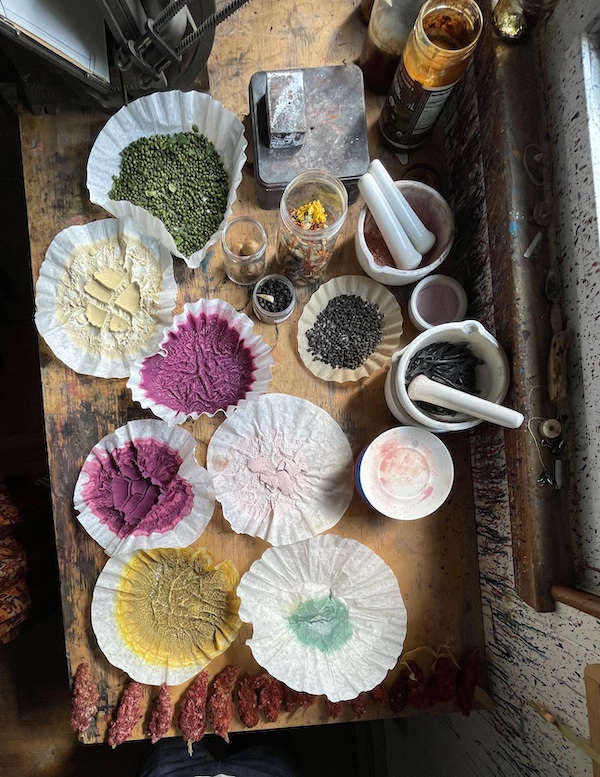
Materiality and multitudes appear to be a current that runs through your practice, say more please!
“A current that runs” is exactly the right phrase; I’m convinced that materials are not a static, inert things, but flowing interactions. Our dyes, mordants, and fibers flow through states of being in the soil, in plants and animals, in the dyepot, in our wastewater… Putting labile materials together and guiding their interaction is the craft of natural dyeing. These materials are temporarily arrested by our artistry, but will eventually continue on their merry way.
You are our resident lake expert. Can you let our readers know a little bit about what to expect with your upcoming workshop? Why is soy a preferred method for painting?
Lake pigments are a fantastic way to use up every drop of color in the dye pot, and convert it to a shelf-stable powder. This class will focus not only on the process and chemistry of making lake pigments, but how to ensure that their colors are richly saturated for painting with. Soy-based paint is very user-friendly, plant-based, and (unlike watercolor or oil paints) requires no special grinding or mulling equipment besides a kitchen blender. Soy paint is also a great option for textile artists because it’s washable on fabric!
How do you work through creative ruts?
I don’t have a surefire method, but it definitely involves making a big mess.
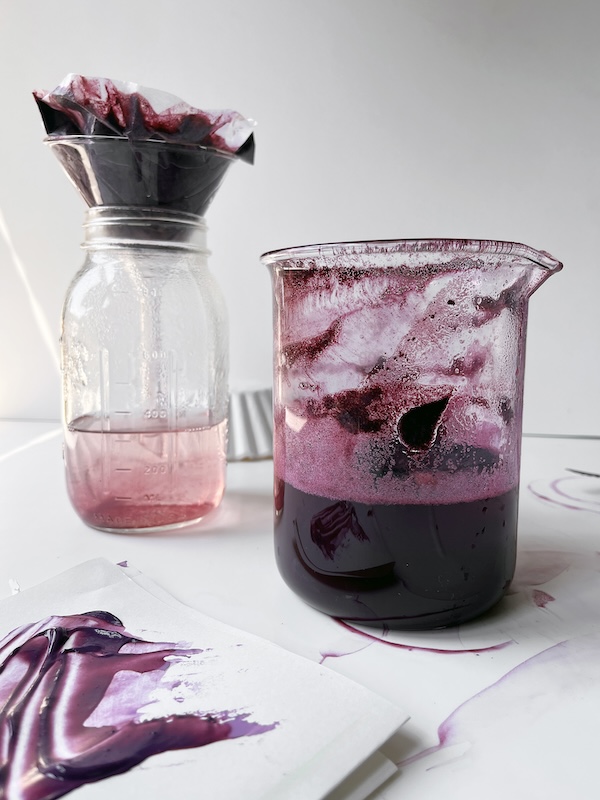
Last song playing in your studio.
“All We Have is Now,” The Flaming Lips
